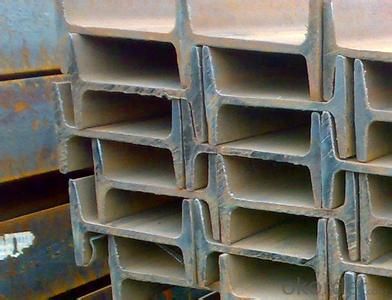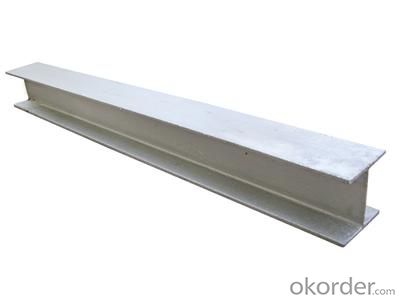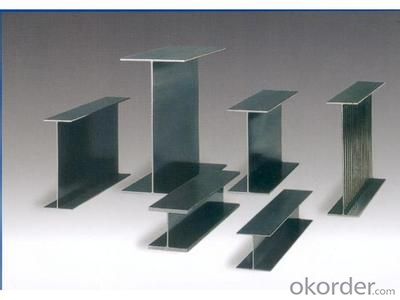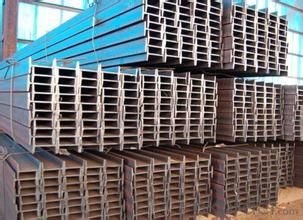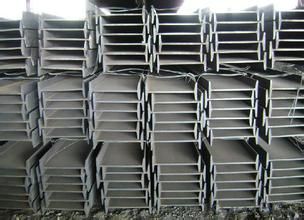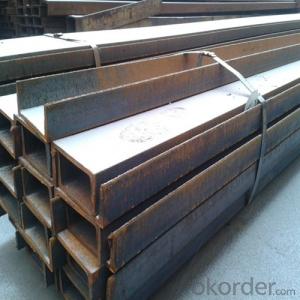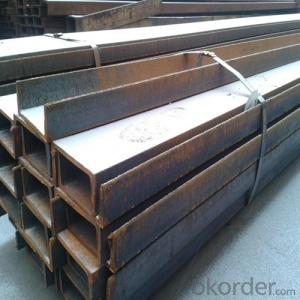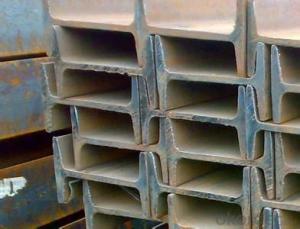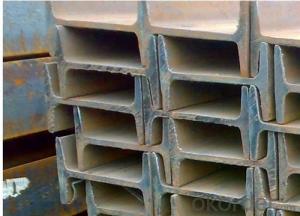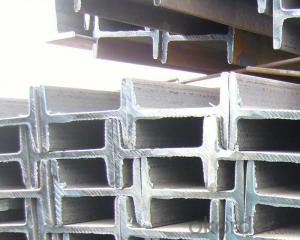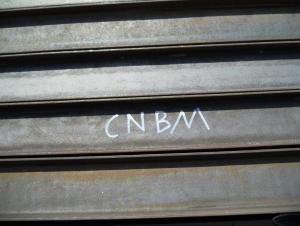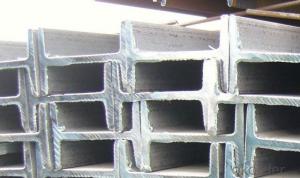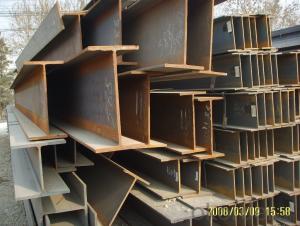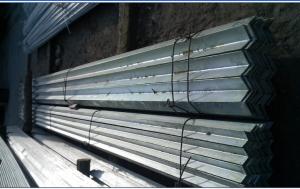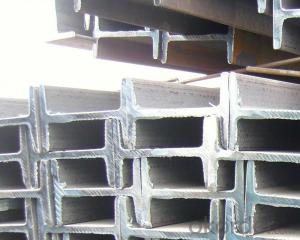High Quality BS Standard Structure Steel I Beam Details
- Loading Port:
- Tianjin
- Payment Terms:
- TT OR LC
- Min Order Qty:
- 500 m.t.
- Supply Capability:
- 20000 m.t./month
OKorder Service Pledge
OKorder Financial Service
You Might Also Like
High Quality BS Standard Structure Steel I Beam Details
Commodity | High Quality BS Standard Structure Steel I Beam |
Standard | BS, JIS, ASTM, DIN, EN, GB/T 700-1988 |
Material | SS400, ST37-2 , A36, S235 JRG1, Q235, Q345 and more |
Chinese standard size | 100 x 68 x 4.5 to 630 x 180 x 17mm |
European standard size | 80 x 46 x 3.8 to 600 x 220 x 12mm |
Length | 6, 9, 12meter |
Packing | bundles, knitting bag or customized |
Application | construction |
Packaging Detail: in bundle and then load on 20 or 40 feet container or by bulk
Delivery Detail: within 25 days after receiving deposit or original L/C
Company Information
Our company is specialized in producing Hot Rolled Metal Structural Steel I Beam .With years of development, our company won the trust and excellen reputation of customers for the quality of our products and sincere service, as well as foreign users of the community.
Please contact me if you are interested in our products and I will try my best to offer you the best goods and service.
- Q: Can steel I-beams be used for underground structures or tunnels?
- Underground structures or tunnels can indeed utilize steel I-beams. Given its robustness, longevity, and rust resistance, steel remains a favored option for subterranean construction. Structural reinforcement is effectively provided by steel I-beams, which are frequently employed in the assembly of subterranean structures like tunnels, subway systems, underground parking lots, and storage facilities. These beams exhibit exceptional load-bearing capabilities and offer stability within underground settings. Furthermore, steel I-beams can be readily fabricated and tailored to suit precise design specifications, thus rendering them an adaptable alternative for subterranean construction endeavors.
- Q: Are I-beam and H steel the same thing?
- I-beam and H steel are not the same thing, there is a difference.
- Q: Do steel I-beams require any maintenance?
- Yes, steel I-beams do require maintenance. Regular inspections should be conducted to identify any signs of corrosion, damage, or structural issues. Additionally, cleaning, painting, and applying protective coatings can help prevent rust and extend the lifespan of the beams.
- Q: Can steel I-beams be welded together?
- Indeed, it is possible to weld steel I-beams together. This method is widely used to combine multiple I-beams into a larger and sturdier structural element. Typically, the procedure involves merging the beams using high-temperature welding techniques like arc welding or gas welding. Through welding, the beams are not only securely joined but also retain their ability to carry loads seamlessly across the joint. Nevertheless, it is crucial to have a certified welder perform the welding and adhere to the appropriate procedures and techniques to uphold the welded I-beams' structural integrity and safety.
- Q: What is the weight of a typical steel I-beam?
- The weight of a typical steel I-beam can vary depending on its size and dimensions. However, as a general guideline, the weight of a 10-foot long steel I-beam, commonly used in construction, can range from 20 pounds per foot for a lighter beam to 200 pounds per foot for a heavier beam. It is important to note that these weights are approximate and may vary based on the specific type and grade of steel used. Additionally, longer or larger I-beams will generally weigh more than shorter or smaller ones. To obtain the exact weight of a specific steel I-beam, it is recommended to consult the manufacturer's specifications or refer to engineering tables that provide weight-per-foot values for various beam sizes.
- Q: What is the cost of steel I-beams compared to other structural beams?
- The cost of steel I-beams can vary depending on various factors, including the specific type and size of the beam, the supplier, location, and current market conditions. When compared to other structural beams like wood, concrete, or aluminum, steel I-beams generally have a higher upfront cost. However, the long-term benefits of steel I-beams often outweigh the initial investment. One advantage of steel I-beams is their superior load-bearing capacity. This allows for larger spans and fewer support columns, resulting in cost savings in terms of material and labor. Additionally, steel I-beams are highly resistant to fire, pests, and natural elements, reducing the need for maintenance and repairs. This durability leads to long-term cost savings and a longer overall lifespan compared to other beam materials. It is important to note that the cost of steel I-beams can be affected by market fluctuations in raw material prices, transportation costs, and regional demand. Therefore, it is recommended to consult with multiple suppliers and contractors to obtain accurate and up-to-date pricing information for specific projects. In conclusion, despite the higher initial cost, steel I-beams are a cost-effective choice for construction projects due to their strength, durability, and long-term cost savings.
- Q: Can steel I-beams be used for underground structures?
- Yes, steel I-beams can be used for underground structures. They are commonly used in construction projects such as basements, underground parking garages, tunnels, and underground utility vaults. Steel I-beams provide excellent structural support, durability, and resistance to the pressures and forces that underground environments may exert.
- Q: Can steel I-beams be used in underground construction?
- Indeed, steel I-beams possess the capability to be utilized in underground construction. Owing to their remarkable strength, endurance, and ability to bear heavy loads, steel I-beams are frequently employed in various construction endeavors. When it comes to underground construction, where structures necessitate withstanding substantial pressure and supporting weighty loads, steel I-beams are often favored. They furnish exceptional structural reinforcement and find extensive application in the creation of tunnels, underground parking facilities, basements, and other subterranean structures. Moreover, steel I-beams can be tailored to meet specific project requirements, guaranteeing their suitability for the distinctive circumstances and complexities entailed in underground construction.
- Q: What is the difference between I-beam and H steel?
- I-beam can only be used for cross beams, and H steel can be used for structural load-bearing columns
- Q: In steel engineering, what is called rigid connection? What is articulated? What kind of nodes or structural parts are applicable to the two? The more detailed the answer, the better!
- Steel structure, beam to column connections are usually used in 3 forms, flexible connection (also known as articulated) and semi rigid connection and rigid connection. In engineering practice, how to distinguish a node belonging to the rigid and semi rigid or hinged connection depends on the rotational stiffness, rigid connection should not have obvious connection with the angle of angle deformation, reduce deformation of the structural resistance should not exceed 5%.
Send your message to us
High Quality BS Standard Structure Steel I Beam Details
- Loading Port:
- Tianjin
- Payment Terms:
- TT OR LC
- Min Order Qty:
- 500 m.t.
- Supply Capability:
- 20000 m.t./month
OKorder Service Pledge
OKorder Financial Service
Similar products
Hot products
Hot Searches
Related keywords





